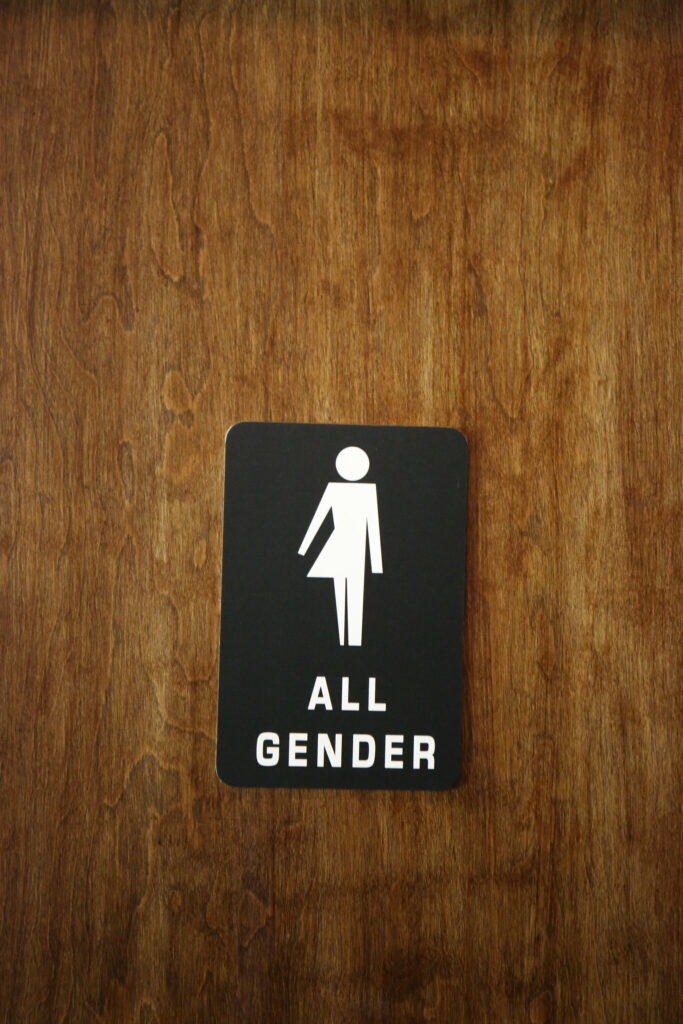10 Wake Forest L. Rev. Online 86
Holly Black*
I. Introduction
Since 1919, North Carolina had treated its sixteen- and seventeen-year-old offenders as adults.[1] These teenagers, who were considered juveniles in every other state in America, were sent through North Carolina’s adult criminal justice system for a variety of crimes.[2] Their offenses went on criminal records. They faced difficulties continuing their education, finding gainful employment, and ultimately, reacclimating into society.[3] On December 1, 2019, after one-hundred years of this misguided system, North Carolina finally raised its age of juvenile jurisdiction to eighteen.[4]
The Juvenile Justice Reinvestment Act (“JJRA”) allows sixteen- and seventeen-year-old juveniles to go through the juvenile justice system when accused of misdemeanors, low-level felonies, and other non-violent crimes.[5] With this change comes a variety of benefits. North Carolina taxpayers save money, recidivism rates decrease, and the overall safety and wellbeing of juvenile delinquents increases significantly.[6]
However, the change also brings a variety of new challenges for the state of North Carolina. Arguably, the largest of these challenges is fully funding the JJRA. While the benefits of the JJRA are enormous, they can only be realized if the state is able to fully fund it. An influx of new sixteen- and seventeen-year-old offenders will enter the juvenile justice system throughout 2020. The state will require additional funding in all areas to meet this new demand, but especially in courts, district attorney’s offices, Indigent Defense Services, and Youth Development Centers. This additional funding must be in place before any of the aforementioned benefits can be realized. While implementation of the JJRA is an investment in North Carolina’s youth, it is also quite literally a monetary investment in North Carolina’s juvenile justice system.
II. North Carolina’s Raise the Age Act
A. Origins of the Act
On December 1, 2019, North Carolina became the final state to “raise the age” of juvenile jurisdiction to eighteen.[7] The JJRA was included within the 2017 state budget and was passed on June 19, 2017.[8] The act makes several changes to the juvenile code, but most notably, it increases the age of juvenile court jurisdiction to include misdemeanors and non-violent felonies committed by sixteen- and seventeen-year-old juveniles.[9]
North Carolina has traditionally been a state that is “tougher” on juvenile crime. mIt has one of the lowest age limits in the nation for juvenile jurisdiction and as a result, allows for children as young as six years old to enter into the juvenile court system.[10] Prior to passage of the JJRA, it also had the lowest age limit for superior court jurisdiction.[11]
With more and more states raising their juvenile court jurisdiction ages, North Carolina’s youth were at a significant disadvantage when compared to youth in other states.[12] In September 2015, the North Carolina Commission on the Administration of Law and Justice (“NCCALJ”) convened, and each of the committee’s five branches[13] made independent recommendations to correct this disadvantage. The first recommendation the committee made regarding juvenile justice was to “raise the juvenile age to eighteen for all crimes except violent felonies and traffic offenses.”[14]
The committee noted that at the time, New York was the only other state to set the juvenile jurisdiction limit at sixteen.[15] Additionally, if the age was raised, a “vast majority” of North Carolina’s teens would fall under juvenile jurisdiction, since teens mainly commit misdemeanors and non-violent felonies.[16] Most importantly, the committee noted that raising the age would make North Carolina’s communities safer by decreasing recidivism,[17] and would increase the overall wellbeing of its juveniles by giving teen offenders an additional opportunity for “developmentally appropriate” justice.[18] As an added benefit, implementing the JJRA would save a significant amount of money.[19] With these reasons in mind, the committee published its final report in March of 2017 and recommended raising the juvenile age to eighteen.
These economic and safety benefits, as well as pressure from other states already passing their own “raise the age” legislation, pushed the North Carolina General Assembly to raise the juvenile jurisdiction age.[20] In 2017, proposed legislation was gaining bipartisan support in the General Assembly and received 90 percent public support in both rural and urban areas.[21] The bill was passed on June 19, 2017, and as a result the juvenile age in North Carolina increased to eighteen effective December 1, 2019.[22]
The JJRA allows juveniles ages sixteen and seventeen to remain in juvenile court if they have been accused of a misdemeanor or a non-violent felony.[23] Since Class A-G felonies are considered violent felonies, juveniles who are accused of those crimes are automatically transferred to superior court.[24] Certain Class H and I felony cases, however, can be considered non-violent felonies and can remain under juvenile court jurisdiction with judicial discretion.[25]
B. Under the Act
As indicated by the term “raise the age,” the biggest change brought by the JJRA is that the juvenile court now has exclusive, original jurisdiction over all crimes and infractions allegedly committed by youths aged sixteen and seventeen.[26]
The JJRA has also changed the length of juvenile court jurisdiction and now allows jurisdiction to continue over any juvenile determined delinquent at age sixteen until the juvenile turns nineteen.[27] Similarly, the juvenile court retains jurisdiction over seventeen-year-olds until they reach age twenty.[28] The extension of juvenile court jurisdiction for these cases allows juveniles to be adjudicated and receive dispositions up until the juvenile reaches age nineteen or twenty.[29] This also allows for any disposition to be prolonged for the same amount of time. This provision, however, does not allow an offense committed at age eighteen or older to be processed in juvenile court.[30]
Because the JJRA increased juvenile court jurisdiction to age eighteen, the Act also brings certain offenses that require the perpetrator to be at least sixteen years old under juvenile court jurisdiction.[31] This change was made in an effort to rehabilitate youth while they are juveniles and before criminal activity becomes more aggressive and leads to more serious consequences.[32] With this focus in mind, the JJRA also targets juvenile gang activity and requires intake counselors to conduct “Gang Assessments” on juveniles age twelve and older as part of evaluating complaints.[33]
The JJRA also expands protections for victims and creates new victims’ rights during the juvenile court intake process. Previously, if a victim had not signed the complaint, he or she had no right to request a review of the petition.[34] However, the JJRA now requires that if a juvenile court counselor decides not to file a petition, immediate notice of the decision must be provided to the both the complainant and the alleged victim.[35] If a review is requested, both the complainant and the alleged victim are included in the prosecutor’s conferences regarding the review.[36]
The JJRA also brings several indirect changes, including the expansion of parental involvement in cases involving sixteen- and seventeen-year-olds[37] and the expansion of the “Once an Adult, Always an Adult” clause.[38] In the two years between the JJRA’s passage in 2017 and its implementation in 2019, sixteen- and seventeen-year-olds were still tried and convicted in superior court for any and all criminal offenses. If a sixteen- or seventeen-year-old had been convicted of a misdemeanor or non-violent felony,[39] but the court proceedings began before December 1, 2019, they still would have been tried and convicted in superior court.[40] Therefore, the teen would have a superior court conviction on his or her record, and by default, they would be included in the class of “Once an Adult, Always an Adult” juveniles who lack juvenile court jurisdiction.[41]
C. Implementing the Act
With all the changes between the old and new statutory framework, implementation of the JJRA requires specific, planned action. The North Carolina General Assembly required the creation of a Juvenile Jurisdiction Advisory Committee (“JJAC”) for this purpose.[42] This twenty-one-member committee[43] is responsible for planning the changes needed to fully implement the JJRA.[44] The committee submitted a required report to the General Assembly on March 1, 2018 detailing its specific plan and cost estimates for raising the age of juvenile jurisdiction to eighteen.[45] It also reported on specific recommendations concerning juvenile jurisdiction extending to certain delinquency matters and proceedings, such as habitual misdemeanors.[46]
To prepare for the December 1, 2019 implementation date, Juvenile Justice was focused on four main objectives: hiring and training incoming and current staff members, increasing capacity of youth detention centers and Youth Development Centers (“YDCs”), facilitating secure custody transportation, and equipping “decision makers” with “up-to-date data during implementation.”[47]
In response to the first objective, Juvenile Justice Staff and North Carolina Department of Public Safety (“DPS”) Human Resources worked jointly to create positions and hire 244 new staff members around the state.[48] Juvenile Justice also partnered with the UNC School of Government and other juvenile-focused agencies to train at least 5,000 “stakeholders from various disciplines.”[49]
The second and third objectives both focus on expansion of youth facilities. Juvenile Justice is working on increasing youth detention facilities’ bed capacities by two hundred to three hundred beds.[50] It is also working on opening a sixty-bed YDC in Rockingham County and a restorative justice pilot program at the Edgecombe YDC.[51]
Juvenile Justice is also changing its transportation system into separate facility-based and court-services based transportation teams.[52] This will help maximize the effectiveness of existing court staff as well as provide added support to youth detention center staff, YDC staff, and court counselors.[53]
Finally, Juvenile Justice is also working on new ways to analyze and distribute data so it can “equip decision makers with up-to-date data during implementation.”[54] From an implementation standpoint, this is arguably one of the most important investments in the JJRA. Since the aim of juvenile justice is rehabilitation, courts, attorneys, and detention facilities require a wealth of background information on a juvenile in order to make decisions that facilitate rehabilitation.[55] Therefore, the JJAC is investing in a variety of ways to better equip decision makers with the necessary information.
One new method of data analytics is the Juvenile Justice Service Directory that provides court counselors with an inventory of program and service options for referrals.[56] The court system is also updating its existing court database system, North Carolina Juvenile Online Information Network (“NC-JOIN”), to allow staff to better track a juvenile’s diversion or post-disposition progress after being placed in a program or facility.[57] The database also contains a program for Globalized Assessment of Individualized Needs (“GAIN”) that allows court counselors to screen juveniles for underlying problems such as mental health or substance abuse issues.[58] The JJAC is also investing in visual analytics to analyze recidivism outcomes and business analytics that allows data from a variety of sources and methods to be merged into one analysis.[59] Not only do these analytics programs allow for timely and proper adjudication and disposition of current delinquent juveniles, but they also provide vital information for further juvenile justice reforms in North Carolina.[60]
In addition to the changes recommended by the JJRC, the North Carolina General Assembly has also been allocating funding for certain areas most in need of resources to implement the JJRA. This funding is allocated in the yearly appropriations act, and will be discussed further in Part IV of this Comment.
D. The Benefits of the Act
The benefits of implementing the JJRA are immense. Raising the age of juvenile jurisdiction helps juveniles receive “developmentally tailored justice” that holds youth accountable while also emphasizing rehabilitation and addressing underlying issues.[61] Recidivism rates drop[62] and without a record of adult convictions, juveniles can continue their education with fewer obstacles and eventually join the workforce.[63] Our communities are safer, our juveniles are safer, and the state of North Carolina saves a considerable amount of money.[64]
All of these benefits stem from the concept that juveniles must be treated with a special form of justice. Children and teens are no longer seen as “mini adults” as they were in the past. Likewise, the juvenile justice system is not seen as a scaled down version of superior court. One of the major successes of the JJRA is that it allows sixteen- and seventeen-year-olds to have access to the help and resources they need during one of the most vulnerable periods of their lives. When a teen is nearing adulthood, he has more power than a younger child.[65] And yet, that teen’s brain still has not fully formed.[66] Therefore, including teens in the juvenile justice system rather than automatically sending them to superior court allows for the state to intervene and correct teens’ behavior before they turn eighteen. This intervention allows the state the opportunity to prevent a teen from later committing offenses that are more severe, both in terms of sentencing and future consequences.
Implementing the JJRA also has significant economic benefits for the state of North Carolina. Over time, the state will save money by rehabilitating youth, rather than incarcerating them for years at a time in adult detention facilities.[67] Processing juvenile offenders through the juvenile justice system has proven to increase rehabilitation and decrease recidivism.[68] The state has also projected savings upwards of $7.1 million due to this drop in recidivism.[69] Since North Carolina is the last state to raise the age of juvenile jurisdiction, it can also look to other states’ success in their own “raise the age” legislation. Implementing the JJRA is an investment in North Carolina’s juveniles. However, it is also an investment in itself. In order to receive the aforementioned benefits, both monetary and societal, North Carolina will have to fully fund the JJRA. This funding will ensure an effective implementation period and will later lead to a variety of benefits for the state and its people.
III. The Raise the Age Act Will Not Be Fully Effective Without Adequate Funding
The JJRA makes several major changes to North Carolina’s juvenile justice system. Each requires significant funding to be fully implemented. Developmentally tailored justice is a layered concept, so it takes proper implementation of each part to make the whole fully functional.[70] The aim of juvenile justice is rehabilitation, and that cannot be achieved unless a juvenile is taken through the entire juvenile justice system, from petition to post-disposition, in a comprehensive, developmentally appropriate manner.[71] This view has been supported by a variety of groups, including the NCCALJ that created the original recommendations for creating and implementing the JJRA.[72]
A. Areas that Require Additional Funding
Because of JJRA implementation, more than 8,000 juveniles ages sixteen and seventeen are now expected to be served under juvenile jurisdiction in 2020.[73] Each of these juveniles will require contact with a court counselor, and many will continue through the adjudication and disposition processes, requiring the work of judges, prosecutors, and defense counsel. Some juveniles may even be committed to a YDC and require additional treatment and rehabilitation. While all areas of the juvenile justice system must be adequately funded for the JJRA to be fully implemented, below are the facets of the justice system most in need of additional staff and monetary resources.
1. The North Carolina Court System
North Carolina’s court system is involved throughout the entire juvenile justice process. Even if a case is diverted, it must go through a court counselor first for screening and intake.[74] Through each step of the process, the juvenile court system requires skilled personnel, advanced database technology, and appropriate transportation to move juveniles through the process in a fair and efficient manner. Additionally, the cost of merely operating a courthouse has increased since the COVID-19 outbreak.[75] Therefore, these extra costs place more demands on North Carolina’s court system and make allocated funding even tighter for court personnel.
Even before the JJRA was implemented, several counties in North Carolina faced staff resource deficits and overbearing workloads.[76] These staff deficiencies, exacerbated by transportation systems and database technology not intended to handle the demands of raising the age, make these counties ill-equipped to handle JJRA implementation. Therefore, these counties require full funding from current JJRA appropriations to even begin to handle the 8,000 juveniles expected to come through the system in 2020. Funding would be allocated towards not only hiring new court staff, but also implementing new technology and transportation changes.[77] However, allotted appropriations for the 2019-2020 and 2020-2021 fiscal years only begin to address the issue by targeting only the neediest counties.[78]
Between allotted funds for the 2019-2020 and 2020-2021 fiscal years, the North Carolina General Assembly has appropriated over $1.8 million for the creation of seven new deputy clerk positions and seven new district court judge positions.[79] Even with this substantial investment in North Carolina’s juvenile courts, there will still be deficiencies in several counties’ court systems. The JJRC recommends additional funding of over $13 million to correct existing deficiencies in the court systems.[80] This recommended investment is intended to prepare courts for JJRA implementation, and it does not account for any additional funds that might be needed if the actual number of juveniles entering the system exceeds the anticipated number.
Nevertheless, the General Assembly is able to adequately address one of the court system’s most dire needs in implementing the JJRA – a lack of court counselors.[81] Court counselors are essential for proper implementation of the JJRA since they manage each case and help determine the best course of action for the rehabilitation of each juvenile.
2. Prosecutors
With the projected increase of more than 8,000 juveniles entering into the juvenile system in 2020,[82] the number of prosecutors in the juvenile system must also increase.[83] The influx of juveniles under the JJRA will require the state to create thirty-five new positions and hire new prosecutors in seventeen of North Carolina’s forty-three prosecutorial districts.[84] Overall, the JJRC recommends creating twenty-five new assistant district attorney positions.[85] However, even with existing funding measures, this must occur gradually over time. Even with the current rise in appropriated funds, North Carolina’s district attorney’s offices will remain understaffed until 2024 at the earliest.[86] With that in mind, it is essential that district attorney’s offices receive their allotted funding amounts to even begin to correct for these assistant district attorney shortages.
3. Juvenile Indigent Defense System
Juveniles in North Carolina are included in a group of only eleven states that presume juveniles are automatically eligible for a court-appointed attorney based on their status as juveniles.[87] In fact, North Carolina is on the more progressive end of this spectrum in allowing all juveniles, regardless of parents’ ability to pay, access to a court-appointed attorney.[88] While this is certainly a benefit[89] for North Carolina’s youth, especially those who could not afford to hire counsel, it is not an all-encompassing solution.
Since all youth in North Carolina are presumed indigent, many rely on North Carolina’s Indigent Defense Services (“IDS”) for counsel. This, however, creates a series of burdens not only for IDS but for the juveniles being appointed IDS counsel. As the number of juvenile cases rise in the coming years, IDS will have to incentivize more private attorneys to handle their cases. Additionally, while juveniles are guaranteed counsel, that does not always mean juveniles will receive “zealous advocates” for their cases.[90]
The North Carolina Office of the Juvenile Defender (“OJD”) is understaffed and underfunded.[91] One way the North Carolina General Assembly is attempting to remedy this is by creating a new position “to provide training and consulting services to private assigned counsel attorneys in the State assigned to juvenile justice cases.”[92] While IDS was granted an additional $87,681 of recurring funds in the 2019-2020 fiscal year,[93] this amount hardly covers the requirement to pay several privately contracted attorneys to handle IDS’s cases at a rate comparable to a North Carolina firm.
4. Youth Development Centers (“YDCs”)
One of the main differences between the adult and juvenile criminal systems is the presence of YDCs. These centers are unmatched in their rehabilitative potential for certain juveniles. Upon being admitted to a YDC, each juvenile undergoes a “screening and assessment of developmental, educational, medical, neurocognitive, mental health, psychosocial and relationship strengths and needs.”[94] Then, the juvenile receives an individualized service plan to meet his or her needs.[95] While in the YDC, each juvenile continues his or her education through standard public school courses taught by teachers licensed by the N.C. Department of Public Instruction.[96] Each juvenile is also assigned a Licensed Mental Health Clinician and receives individual or group psychotherapy on a weekly basis.[97]
Since YDCs provide many rehabilitative services to juveniles as part of a comprehensive plan, they are fairly expensive to operate.[98] In the 2017-2018 fiscal year, North Carolina spent $26,997,644 on its four YDC facilities.[99] The state is also planning on opening Rockingham YDC, a sixty-bed facility located in Reidsville, N.C.[100] While this facility will increase the state’s YDC capacity, it will also increase the amount of money invested in the state’s YDC system.[101]
However, even with a capacity to house 248 juveniles at a time, North Carolina continues to serve more juveniles in its YDCs than it has room for. In 2018, even before the implementation of the JJRA, North Carolina was serving 361 juveniles among its four facilities.[102] In 2016 the number of juveniles committed to YDCs decreased by 48 percent,[103] but the majority of the YDC population at the time was age fifteen or sixteen.[104] With a trend of committing older juveniles to YDCs, the already large YDC population will likely remain consistent and potentially grow with the estimated influx of 8,000 sixteen- and seventeen-year-old offenders.[105]
B. Potential Solutions to the Funding Challenges
The North Carolina General Assembly has addressed many of the above funding challenges through its 2019-2020 fiscal year appropriations. However, in some instances, the allotted funding is still not enough. In order to fully fund the JJRA and address staff and resource deficiencies, North Carolina will have to decrease its reliance on juvenile incarceration, increase its use of diversion plans for minor offenses, and change the organization and payment structure of its indigent defense system. Changes like these have already worked in other states and they will allow North Carolina to save money while better serving its juvenile population.[106] Additionally, broad changes involving police divestment could ease these financial burdens in the coming years and allow for additional investment into community programs.
1. Reduce Juvenile Incarceration Rates
Decreasing the North Carolina Juvenile Justice system’s reliance on youth incarceration not only brings substantial benefits for the state, but for juveniles as well. Holding juveniles in detention facilities has been proven to increase criminal behavior in juveniles later in life[107] and now, it also poses serious COVID-19 related health risks.[108] Therefore, the use of these facilities should be limited to only the most severe cases.
In North Carolina, juveniles are often placed in detention centers for non-violent offenses, such as truancy and low-level property offenses.[109] Since these juveniles pose a relatively low public safety risk, they would be better served through community based, rehabilitative programs.[110] Utilizing these programs would not only help meet the needs of the juvenile, but it would also save the state a significant amount of money.[111]
Other states, such as Nebraska, have successfully moved from a reliance on juvenile incarceration and towards the use of rehabilitative community programs. The Nebraska State Legislature passed a bill that required juveniles to be placed in the “least restrictive situation that their offense would allow.”[112] For many non-violent offenses this meant keeping juveniles at home and allowing them access to therapy or drug rehabilitation services as “an alternative to incarceration.”[113] The changes were so successful that across the state, fewer than ten low-risk youth are detained per month.[114]
The North Carolina General Assembly has already paved the way for this investment by passing two Session Laws[115] that allowed $75,000 in additional funding available for community programs in the 2004-2005 fiscal year. Since then, these programs have proven to be efficient[116] and cost-effective.[117] Most importantly, they led to noticeable decreases in recidivism rates.[118]
Once more community programs are in place, the state could begin to also use community programs more frequently as an option for disposition, rather than committing juveniles to YDCs. The use of residential or community programs in place of YDCs for less severe adjudications saves the state $88,880 to $104,069[119] per juvenile, respectively.[120] Similar to the benefits seen from decreasing juvenile incarceration rates, reducing the use of YDCs for low level offenders would also decrease recidivism and deter juveniles from committing offenses.[121]
2. Reduce the Number of Juveniles Referred to Juvenile Court
The next step is to reduce the number of juveniles referred to juvenile court for status offenses and eventually, all low-level offenses. 2018 was the lowest year on record for juvenile crime in North Carolina.[122] A majority of that decrease resulted from a drop in delinquent complaints.[123] The number of status complaints, however, has remained comparatively stagnant.[124] In fact, from 2015 to 2017 the number of status complaints actually increased.[125] North Carolina’s existing juvenile justice methods help reduce the amount of delinquent complaints, but they do not have the same success rate with decreasing status complaints.
Since the current system does not adequately address status offenses, these should be handled outside the system. The North Carolina court system should begin a policy of considering and exhausting all diversion options for status complaints before filing a petition. Status offenses are the least severe of all juvenile offenses[126], so status offending juveniles can generally be diverted without posing any risk to society. Today’s mental health screening tools can help identify youth with immediate needs and determine if diversion is appropriate in each case.[127]
Other states have seen success in similar juvenile justice reforms. Connecticut saw an overall decrease in expenditures after implementing its “raise the age” laws along with an “aggressive pretrial diversion program.”[128] Kansas has reclassified status offenses and now, status based offenders cannot be incarcerated unless a judge finds a compelling reason to do so.[129] The Kansas state legislature hopes to extend this law so juveniles who have committed status offenses or misdemeanors are also ineligible for YDC commitment.
3. Change the Organization and Payment Structure of North Carolina’s Indigent Defense Services
Currently, North Carolina’s juvenile defense system is county-based.[130] Not only does it lack the uniformity of a state-wide system, but it also lacks efficiency. While there are a variety of options for juvenile defense, most counties only have one or two options available.[131] Moreover, there are counties that do not have access to an assistant public defender for juvenile cases.[132] Therefore, most juveniles turn to IDS and its Office of Juvenile Defense for representation.
The county-based structure of IDS contributes to its lack of uniformity and its inefficiency. First, IDS does not offer the same defense services in every county.[133] This leads to a difference in representation between counties and an unpredictability of cost in each case. Ultimately, this system leads to a high turnover of attorneys, causing the state to spend more time and money in training new IDS attorneys.
Additionally, the IDS hourly pay system causes differences in the quality of appointed counsel. The current low hourly pay grade leads to lower quality representation, an emphasis on quantity of cases rather than quality, and over-complicating cases to bill more hours.[134] While the optimal solution would be to increase IDS’s budget for attorney compensation, until that can occur, IDS should move from an hourly pay system to a flat fee or contract system.
Flat fee compensation has been proven to reduce administrative costs, allow greater participation from the private bar, and allow greater flexibility to private attorneys who may not want to take on many indigent cases.[135] Similarly, “carefully planned and tailored contracts” can lead to IDS recruiting qualified attorneys with the proper training and skillset to represent juveniles.[136] These contracts would also provide workload caps and other limitations to keep attorneys from over-working a case to a level that is outside the paygrade of the contract.
While the solution of restructuring North Carolina’s IDS goes mainly towards improving the quality of representation juveniles receive, it also helps maximize the efficiency and quality of IDS as a whole. This solution, therefore, helps juveniles while also maximizing the effectiveness of the funds allocated to IDS in fiscal years 2019-2020 and 2020-2021.[137] While IDS will remain understaffed and underfunded with these allocations, changing the organization and payment structure will allow IDS to be more effective under current funding constraints.
4. Embrace an “Invest-Divest” Strategy for Police Reform
Finally, one overarching solution to many of North Carolina’s Juvenile Justice System’s funding concerns is police divestment. Supported by groups such as the Movement for Black Lives and the ACLU, the “invest-divest” strategy for police reform focuses on reallocating funding earmarked for policing and reinvesting it into long-term safety strategies.[138] In fiscal year 2020, the state of North Carolina appropriated approximately $3 billion to law enforcement activities.[139] A portion of this large sum could easily be reallocated for community programs and eventually, resources for juvenile court counselors, youth mental health, and education specialists.[140]
A key piece of this divestment also comes from within the juvenile justice system. As the role of law enforcement changes in America’s criminal justice system, it will change in the juvenile system as well. Funding allocated for policing of juveniles in schools and YDCs can also be reallocated to community programs. This form of direct reallocation has already proven successful in Kansas through a “lockbox mechanism” used to transfer unused funds directly from YDCs to juvenile community programs.[141]
IV. Conclusion
Implementing the JJRA creates tremendous benefits for North Carolina. It keeps our communities safer by decreasing juvenile delinquency rates and recidivism rates. It also increases the overall wellbeing and safety of juvenile offenders. Eventually, the JJRA will save taxpayers money. However, to see any of these benefits, North Carolina must fully fund the Act.
The reality is that the General Assembly has a finite amount of funding to allocate. Some essential programs, like district attorney’s offices and IDS, will remain understaffed and overburdened, having to do the best they can with the funds they have been allocated. However, through solutions like decreasing North Carolina’s reliance on juvenile incarceration, increasing the use of diversion plans and community programs, changing the organization and payment structure of IDS, and eventually embracing a divest-invest strategy for policing, North Carolina can reduce burdens on key juvenile justice resources. Over time, the juvenile crime rate will decrease, and these burdens will become lighter. For now, though, these solutions help maximize North Carolina’s investment in both the JJRA and its future.
*J.D. Candidate 2021, Wake Forest University School of Law; Kinesiology and Spanish, B.S., B.A. 2018, The University of Tennessee, Knoxville. Thank you to the Wake Forest Law Review Board and Staff for all their time and effort, especially during a global pandemic. I would also like to thank Mathew Wright, for his encouragement, as well as my family, Scott, Kristi, and Rhiannon for their unwavering support throughout law school. And finally, a special thank you to the many individuals fighting for juvenile justice and police reform efforts.
[1]. Jacquelyn Greene, Univ. N.C. Sch. Gov’t, Juvenile Justice Reinvestment Act Implementation Guide 1 (2019).
[2]. See Anne Blythe, NC Becomes Last State to ‘Raise the Age’ of Teens in Court, News & Observer (June 20, 2017 5:27 PM), https://www.newsobserver.com/news/politics-government/article157219234.html; see also Melissa Boughton, N.C.’s New “Raise the Age” Law Appears to be Off to a Promising Start, N.C. Pol’y Watch (Jan. 16, 2020), http://www.ncpolicywatch.com/2020/01/16/ncs-new-raise-the-age-law-appears-to-be-off-to-a-promising-start/.
[3]. See Blythe, supra note 2; see also Boughton, supra note 2; Raise the Age – NC, N.C. Dep’t Pub. Safety, https://www.ncdps.gov/our-organization/juvenile-justice/key-initiatives/raise-age-nc (last visited Aug. 18, 2020).
[4]. Blythe, supra note 2.
[5]. Id.
[6]. Raise the Age – NC, supra note 3.
[7]. Blythe, supra note 2.
[8]. 2017-57 N.C. Sess. Laws 309.
[9]. LaToya Powell, Univ. N.C. Sch. Gov’t, 2017 Juvenile Justice Reinvestment Act 1 (2017).
[10]. The common law default for minimum juvenile court jurisdiction age is seven. See Nat’l Rsch. Council, Reforming Juvenile Justice: A Developmental Approach 52 (Richard J. Bonnie et al. eds., 2013).
[11]. Lauren Horsch, Raise-the-Age Bill Gains Steam in One of the Last States to Prosecute 16-Year-Olds as Adults, News & Observer (Mar. 8, 2017, 6:20 PM), https://www.newsobserver.com/news/politics-government/state-politics/article137281928.htmlhttps://www.newsobserver.com/news/politics-government/state-politics/article137281928.html.
[12]. Before JJRA implementation, teens in North Carolina faced much stricter consequences for actions than teens in other states. For example, when comparing North Carolina with Massachusetts, a teen in North Carolina could commit exactly the same crime as a Massachusetts teen his age, but face significantly worse consequences. In Massachusetts, a sixteen-year-old could commit a misdemeanor, or even a non-violent felony, and still enter into the juvenile justice system. The North Carolina teen, however, would automatically enter the adult system and face criminal charges. If the Massachusetts teen was adjudicated delinquent, his record would be sealed, and it would not affect his ability to apply for higher education funding. Unlike the Massachusetts teen, if the North Carolina teen was found guilty, he would not only face a punishment for the charge, but also a criminal record. That record would later limit his choices in life and possibly preclude him from joining the military and applying for funding for higher education. See id.; Shira Schoenberg, Teen Arrests Drop Steeply in Massachusetts After Criminal Justice Reform, Mass Live (Dec. 31, 2019), https://www.masslive.com/news/2019/12/teen-arrests-drop-steeply-in-massachusetts-after-criminal-justice-reform.html.
[13]. Those five branches were: (1) Civil Justice, (2) Criminal Investigation and Adjudication, (3) Legal Professionalism, (4) Public Trust and Confidence, and (5) Technology. See N.C. Comm’n Admin. Law & Just., Final Report: Recommendations for Strengthening the Unified Court System of North Carolina 44 (2017), https://www.nccourts.gov/assets/documents/publications/nccalj_final_report.pdf.
[14]. Id.
[15]. New York raised its juvenile cut-off age to sixteen in 2018 and then to seventeen in 2019. See id., app. a, at 7; see also Governor Cuomo Signs Legislation Raising the Age of Criminal Responsibility to 18-Year-Olds in New York, N.Y. Governor’s Press Off. (Apr. 10, 2017) https://www.governor.ny.gov/news/governor-cuomo-signs-legislation-raising-age-criminal-responsibility-18-years-old-new-york.
[16]. Specifically in 2014, out of 5,689 sixteen- and seventeen-year-olds convicted in North Carolina, only 187 were convicted of violent felonies. Thus, only 3.3 percent of North Carolina’s teens were convicted of violent felonies. That left 16.3 percent of these youth convicted of non-violent felonies and 80.4 percent convicted of misdemeanors. See N.C. Comm’n Admin. Law & Just., supra note 13, app. a, at 7.
[17]. Processing sixteen- and seventeen-year-old juvenile offenders in the juvenile system allows for more supervision and a 7.5 percent decrease in recidivism. Id., app. a, at 8.
[18]. Stephanie Tabashneck, “Raise the Age” Legislation: Developmentally Tailored Justice, Crim. Just., Winter 2018, at 13.
[19]. In fact, in 2009, the Governor’s Crime Commission Juvenile Age Study estimated raising the age to eighteen would result in a net benefit of $7.1 million for the State of North Carolina. See Governor’s Crime Comm’n, Juvenile Age Study: A Study of the Impact of Expanding the Jurisdiction of the Department of Juvenile Justice and Delinquency Prevention 4–6 (2009); see also N.C. Comm’n Admin. Law & Just., supra note 13, app. a, at 8–12.
[20]. Governor’s Crime Comm’n, supra note 19, at 12–13.
[21]. Horsch, supra note 11.
[22]. Blythe, supra note 2.
[23]. A non-violent felony is defined as any felony excluding: Class A through G felonies; felonies that include assault as an essential element of the offense; felonies that require registration pursuant to Article 27A of Chapter 14 of the General Statutes; certain sex-related or stalking offenses; certain offenses involving methamphetamines, heroin, or cocaine; certain offenses involving hate crimes; and certain offenses involving commercial vehicles and impaired driving. See N.C. Gen. Stat. §15A-145.4 (2019); N.C. Sent’g & Pol’y Comm’n, Classification of Sample Offenses (2017), https://www.nccourts.gov/assets/documents/publications/Sample-list-2017.pdf (listing sample offenses within each class).
[24]. Before the transfer, the juvenile must either receive (1) notice and a finding by the court that a bill of indictment has been returned that charges the commission of an offense that would be a class A-G felony if it had been committed by an adult, or (2) notice, hearing, and a finding of probable cause that the juvenile committed an act that would be a class A-G felony if committed by an adult. 2017-57 N.C. Sess. Laws 311.
[25]. If the judge decides to transfer the case, the juvenile still receives notice, he is still given a hearing, and the court must find probable cause before transfer. Additionally, prosecutors and juvenile’s attorney can each motion to transfer a juvenile’s case to superior court. If a motion is denied or no motion is made, the case remains in juvenile court. Id.
[26]. Although sixteen- and seventeen-year-olds who allegedly commit class A-G felonies are eventually tried in superior court, their cases must still originate in juvenile court and later be transferred to superior court. Additionally, this jurisdiction excludes motor vehicle law violations under Chapter 20 of the North Carolina General Statutes. Greene, supra note 1, at 6; 2017-57 N.C. Sess. Laws 309–311.
[27]. N.C. Gen. Stat. § 7B-1601(b1); Greene, supra note 1, at 11.
[28]. Greene, supra note 1, at 11.
[29]. The extension of the timeline for disposition is crucial because the consequences of the juvenile disposition are far less severe than a guilty verdict in superior court. In juvenile court, a delinquency adjudication does not rise to the level of a conviction and it is not public record. It also does not cause the juvenile to forfeit any citizenship rights or future citizenship rights to be gained at age eighteen, such as the right to vote. See N.C. Jud. Branch, Juvenile Delinquency: General Information, https://www.nccourts.gov/help-topics/family-and-children/juvenile-delinquency (last visited Aug. 18, 2020) (“In order to protect the privacy of children who are involved in these proceedings, juvenile court records may be accessed only by authorized persons, such as the juvenile, the juvenile’s parent or guardian, the juvenile’s attorney, prosecutors, juvenile court counselors, and some probation officers. Public disclosure of juvenile records is prohibited without a court order. . . . An adjudication of delinquency in juvenile court is not a conviction of a crime nor does it cause the juvenile to forfeit any citizenship rights.”).
[30]. Because of this, an eighteen- or nineteen-year-old could have simultaneous active cases in juvenile and superior court. N.C. Gen. Stat. § 7B-1601(b1) (2019); Greene supra note 1, at 11–12.
[31]. These offenses include certain offenses associated with wearing of masks and hoods; solicitation and intimidation, punishment, or retaliation for gang withdrawal; larceny by servants and other employees; embezzlement of property received by virtue of office or employment; incest; taking indecent liberties with children; and solicitation of child by computer or certain other electronic devises to commit an unlawful sex act. N.C. Gen. Stat. § 7B-1501(7)b (2019); Greene, supra note 1, at 81–82.
[32]. Greene, supra note 1, at 33.
[33]. Id.
[34]. Id. at 29.
[35]. Id.
[36]. Id. at 30.
[37]. The juvenile system requires the juvenile’s parent or legal guardian to be present at all court dates and meetings associated with the case. In some instances, a parent or guardian can even be found in contempt of court for failing to appear at their child’s court date. Therefore, expanding juvenile jurisdiction also expands the amount of parental involvement in the system. Jason Langberg & Patricia Robinson, A Guide to Juvenile Court for Youth and Parents in North Carolina 9 (Youth Justice N.C., 2014), https://www.dconc.gov/home/showdocument?id=11955.
[38]. This section requires the state to prosecute a juvenile as an adult for any criminal offense if the juvenile has previously been transferred to and convicted in superior court or has previously been convicted in either district or superior court for a felony or a misdemeanor. This includes a violation of the motor vehicle laws under State law. Greene, supra note 1, at 8–9, 29; see also 2017-57 N.C. Sess. Laws 310.
[39]. These acts are now covered under juvenile jurisdiction. Greene, supra note 1, at 6.
[40]. Id. at 1.
[41]. Additionally, since the JJRA excludes all motor vehicle offenses from juvenile court jurisdiction, any juvenile who commits a felony motor vehicle offense or a misdemeanor motor vehicle offense involving impaired driving will continue to be included in the grouping of “Once an Adult, Always an Adult” juveniles. Id. at 8–9.
[42]. 2017-57 N.C. Sess. Laws 323.
[43]. The session laws provide a complete list of all board membership positions. Id. at 323–24. See also Juvenile Jurisdiction Advisory Committee, N.C. Dep’t Pub. Safety, https://www.ncdps.gov/our-organization/juvenile-justice/key-initiatives/raise-age-nc/juvenile-jurisdiction-advisory-committee (last visited Aug. 18, 2020) (providing a list of current board members).
[44]. 2017-57 N.C. Sess. Laws 323–24.
[45]. The committee also considered how those costs would change if implementation was staggered based on age, but ultimately, that method of implementation was not used. Id. at 324–25.
[46]. Because this committee plays such an influential role in the implementation of the JJRA, it will continue to submit updated progress reports every year on January 15 until the year 2023. Id.
[47]. Juv. Jurisdiction Advisory Comm., Juvenile Age Interim Report 10 (2020).
[48]. Id.
[49]. Id.
[50]. As of January 2020, it has opened forty-three. Id.
[51]. Id.
[52]. Id.
[53]. Id. at 15.
[54]. Id. at 10.
[55]. Id. at 11.
[56]. Id. at 18–19.
[57]. The use of data and tracking systems is also a useful tool for tracking juvenile offenders who have been placed in home confinement due to COVID-19 safety concerns. Data/Statistics/Reports, N.C. Dep’t Pub. Safety https://www.ncdps.gov/juvenile-justice/data-statistics-reports (last visited Aug. 18, 2020) (“[T]he network is a web-based system that allows staff at various points in the state’s juvenile justice system to track the progress and placement of youth being served by various programs and facilities.”).
[58]. Screening and Assessment, N.C. Dep’t Pub. Safety https://www.ncdps.gov/juvenile-justice/juvenile-court-services/reclaiming-futures-nc/resources-for-local-sites/screening-and-assessment (last visited Aug. 18, 2020).
[59]. Juv. Jurisdiction Advisory Comm., supra note 47, at 19.
[60]. Id.
[61]. See generally Tabashneck, supra note 18, at 13 (explaining a variety of reasons why the juvenile justice system processes juveniles in a developmentally appropriate manner).
[62]. N.C. Comm’n Admin. Law & Just., supra note 13, app. a, at 8.
[63]. Id., app. a, at 4–5.
[64]. Id., app. a, at 10–11.
[65]. Tabashneck, supra note 18, at 13.
[66]. Id. at 13, 16.
[67]. Juveniles housed in adult detention facilities require housing in supermax facilities that cost about $100,000 per year. See N.C. Comm’n Admin. Law & Just., supra note 13, app. a, at 15.
[68]. See id., app. a, at 11 (“Much of the estimated cost savings would result from reduced recidivism, which ‘eliminates future costs associated with youth “graduating” to the adult criminal system, and increased lifetime earnings for youth who will not have the burden of a criminal record.’”).
[69]. A 2009 study projected net benefit of $7.1 million dollars. Later, a 2011 study projected benefits of $52.3 million. Therefore, savings could be projected to be $7.1 million or more. See id.
[70]. See Tabashneck, supra note 18, at 13, 18 (discussing the various parts that contribute to a functional juvenile system).
[71]. Id. at 13.
[72]. N.C. Comm’n Admin. Law & Just., supra note 13, app. d, at 43–45.
[73]. Id., app. a., at 11.
[74]. Langberg & Robinson, supra note 37, at 1, 7.
[75]. John Hinton, Forsyth County Hall of Justice Will Undergo a Deep Cleaning This Weekend, a County Official Says, Winston-Salem J. (Apr. 24, 2020), https://journalnow.com/news/local/forsyth-county-hall-of-justice-will-undergo-a-deep-cleaning-this-weekend-a-county-official/article_98c4f954-6e60-5522-8eb4-958f75ec2e73.html (noting that it costs around $9,000 to deep clean a courthouse).
[76]. Juv. Jurisdiction Advisory Comm., supra note 47, at 7.
[77]. See supra Subpart II.C (providing more information on these technology and transportation changes).
[78]. See Act of Oct. 14, 2019, § 3(a), 2019-229 N.C. Sess. Laws 7 (noting seven deputy clerk positions will be created and they will specifically be assigned to Alamance, Burke, Davidson, Johnston, McDowell, Randolph, and Yadkin counties).
[79]. This figure comes from adding the 2019-2020 and 2020-2021 recurring and nonrecurring funds. Id.
[80]. Juv. Jurisdiction Advisory Comm., supra note 47, at 1.
[81]. In the most recent appropriations bill, the General Assembly allotted over $13 million for the creation of ninety-seven court counselor positions throughout the 2019-2020 fiscal year. 2019-229 N.C. Sess. Laws 9.
[82]. Juv. Jurisdiction Advisory Comm., supra note 47, at 10–11.
[83]. Since the same number of prosecutors are still needed elsewhere in the court system, district attorney’s offices cannot simply move prosecutors from one area prosecution over to the juvenile courts system. Therefore, new positions must be created to handle the increased juvenile caseload.
[84]. Juv. Jurisdiction Advisory Comm., supra note 47, at 8–9.
[85]. These new positions will be gradually created as follows: nine in 2019, seven in 2020, eight in 2021, and one in 2023. Id. at 7.
[86]. Based on current projection data, the JJRC recommends creating thirty-five new assistant district attorney positions. However, the North Carolina General Assembly only approved funding measures to create twenty-five new positions between 2019 and 2023. Therefore, there will still be a need for ten additional assistant district attorneys even after the year 2023. Id. at 7–9.
[87]. The other ten states are: Indiana, Louisiana, New York, Pennsylvania, Delaware, Montana, Massachusetts, Wisconsin, Vermont, and Washington. Nat’l Juv. Def. Ctr., Access Denied: A National Snapshot of States’ Failure to Protect Children’s Right to Counsel 10 (2017).
[88]. Compare N.C. Gen. Stat. § 7B-2000(b) (2019) (“All juveniles shall be conclusively presumed to be indigent, and it shall not be necessary for the court to receive from any juvenile an affidavit of indigency.”), with Ind. Code. § 33-40-3-6(a) (2017) (providing that a guardian may be charged for the representation if it is later determined the guardian is financially able).
[89]. One major benefit of this standard is that it allows a juvenile to receive appointed counsel without considering the financial status of the juvenile’s parent or guardian. In some instances, a juvenile’s parent or guardian could finance the juvenile’s counsel, but refuses to do so. Juveniles in North Carolina, however, avoid this scenario through the juvenile indigency standard. Therefore, while reliance on appointed counsel poses its own unique set of problems, North Carolina’s juvenile indigency standard still ensures every juvenile can exercise the right to counsel.
[90]. With only three attorneys on the Office of Juvenile Defender staff, it is impossible for OJD attorneys to regularly observe and assess appointed counsel, or to survey juveniles and parents to determine their satisfaction with their appointed counsel.
[91]. N.C. Comm’n Indigent Def. Servs., Fiscal Year 2018 Annual Report 7 (2019).
[92]. This position went into effect on October 1, 2019. 2019-229 N.C. Sess. Laws 8.
[93]. Id.
[94]. See Youth Development Centers, N.C. Dep’t Pub. Safety https://www.ncdps.gov/Juvenile-Justice/Juvenile-Facility-Operations/Youth-Development-Centers (last visited Aug. 18, 2020).
[95]. These individualized plans outline commitment services, including plans for education, mental health services, medical services and treatment programming. Id.
[96]. Id.
[97]. Id.
[98]. In the 2017-2018 fiscal year, North Carolina’s four YDCs cost $26,997,664 to operate. Memorandum from Erik A. Hooks, Sec’y, and Reuben F. Young, Interim Chief Deputy Sec’y, N.C. Dep’t Pub. Safety, to Chairs of the Joint Legis. Oversight Comm. on Just. & Pub. Safety, Chairs of the Senate Appropriation Subcomm. on Just. & Pub. Safety, and Chairs of the House Appropriation Subcomm. on Just. & Pub. Safety, Fiscal Rsch. Div. (Oct. 1, 2018), https://files.nc.gov/ncdps/Annual%20Report%20on%20Youth%20Development%20Centers-%20October%202018_0.pdf [hereinafter Memorandum from Hooks & Reuben].
[99]. These facilities were: Chatham, a thirty-two-bed facility located in Siler City, N.C.; Edgecombe, a forty-four-bed facility located in Rocky Mount, N.C.; Lenoir, a forty-four-bed facility located in Kinston, N.C.; and Jackson, a ninety-six-bed facility located in Concord, N.C. See id.
[100]. See Youth Development Centers, supra note 94; N.C. Comm’n Admin Law & Just., supra note 13, app. a., at 18.
[101]. This investment could also pose serious monetary consequences as the COVID-19 pandemic continues. Currently, the state is committing fewer juveniles to YDCs, so it is possible that North Carolina may not reach full YDC capacity for years to come, if ever.
[102]. Memorandum from Hooks & Reuben, supra note 98.
[103]. Div. of Adult Corr. & Juv. Just., N.C. Dep’t Pub. Safety, Juvenile Justice 2016 Annual Report 10 (2016) (identifying a 48 percent decrease from 2010 to 2016). That decrease continued into 2018 with a 62 percent decrease from 2010-2018. Div. Adult Corr. & Juv. Just., N.C. Dep’t Pub. Safety, Juvenile Justice 2018 Annual Report 16 (2018).
[104]. Juvenile Justice 2016 Annual Report, supra note 103, at 28.
[105]. This projection reflects the rate of YDC use before the COVID-19 pandemic. While the state is preparing to return to normal operation of its YDCs, it is entirely possible that more counties will continue to move away from YDC use and the number of juveniles committed to a YDC will not rise. Juv. Jurisdiction Advisory Comm., supra note 47, at 10.
[106]. Ilene Grossman, New Approach to Juvenile Justice: In States Such as South Dakota, Nebraska, and Kansas, Reforms Reduce Reliance on Incarceration, Invest in Proven Intentions, Council of State Gov’ts (May 2015), https://www.csgmidwest.org/policyresearch/0515-juvenile-justice.aspx.
[107]. Off. Juv. Just. & Delinq. Prevention, U.S. Dep’t of Just., Diversion from Formal Juvenile Court Processing 5–7 (2017).
[108]. These risks are both physical and mental since confined youth are at a greater risk of contracting COVID-19 and new safety measures have decreased the number of visitors and home visits allotted to each juvenile. See All Juveniles in NC Secure Custody Facilities Tested for COVID-19, No Positive Cases Reported, WBTV.Com (July 2, 2020, 4:13 PM), https://www.wbtv.com/2020/07/02/all-juveniles-nc-secure-custody-facilities-tested-covid-no-positive-cases/.
[109]. Langberg & Robinson, supra note 37 at 7 (“[A] juvenile may be taken into temporary custody – i.e. placed in a detention center – if: . . .
a law enforcement officer or court counselor has reasonable grounds to believe the juvenile is an undisciplined juvenile – i.e., is unlawfully absent from school; regularly disobedient to and beyond the disciplinary control of his/her parent; regularly found in places where it is unlawful for a juvenile to be; or has run away from home for a period of more than 24 hours.”).
[110]. N.C. Div. Juv. Just., Juvenile Diversion in North Carolina 2 (2013).
[111]. The annual cost per juvenile for a detention center bed is $57,593. Community programs, however, pose a much lower cost solution at $857, per juvenile, per year. N.C. Comm’n Admin Law & Just., supra note 13, app. a., at 13.
[112]. Grossman, supra note 106.
[113]. Id.
[114]. See Corey R. Steele & Ellen Fabian Brokofsky, Neb. Jud. Branch, Probation Juvenile Justice Reform Efforts March 2019 5 (2019).
[115]. See Current Operations and Capital Improvements Appropriations Act of 2004, 2004-124 N.C. Sess. Laws 1, 132; Current Operations and Capital Improvements Appropriations Act of 2005, 2005-276 N.C. Sess. Laws 1, 296.
[116]. In the 2017-2018 fiscal year, 157 juveniles were served by community programs, ninety-nine juveniles exited the program, and seventy successfully completed the program. N.C. Dep’t Pub. Safety, Alternatives to Commitment Programs Annual Evaluation Report 1 (2019).
[117]. Id. at 2 (“Data analysis from the inception of these services in FY 2004-2005 confirms that that intensive, evidence-based, research-supported services provided to juveniles and their families continue to be effective and cost-efficient.”).
[118]. Id. at 9.
[119]. See id.
[120]. Id.
[121]. Off. Juv. Just. & Delinq. Prevention, supra note 107, at 1.
[122]. Juvenile Justice 2018 Annual Report, supra note 103, at 10.
[123]. Id.
[124]. From 2013 to 2018, the amount of delinquent complaints decreased by almost 27 percent while the amount of status complaints only decreased by approximately 10 percent. Id. (These percentages were calculated as the percent difference from 2013 to 2018 provided in the annual report).
[125]. Id.
[126]. Status offenses are labeled as a class zero offense, indicating they are so lacking in severity that they are not even numbered. See N.C. Div. of Juv. Just., supra note 110, at 7, Table 2.
[127]. Elizabeth Seigle et al., Council of State Gov’ts, Core Principles for Reducing Recidivism and Improving Other Outcomes for Youth in the Juvenile Justice System 48 (2014).
[128]. Tabashneck, supra note 18, at 17.
[129]. Grossman, supra note 106.
[130]. Langberg & Robinson, supra note 37, at 17–18.
[131]. As of August 2014, thirty North Carolina counties offered IDS funded “privately assigned counsel” or “contract attorney” as the only option for juvenile defense representation. Id.
[132]. Id.
[133]. Some counties have contract attorneys while others have a variety of privately assigned counsel that are paid through IDS. Id.
[134]. Id. at 9.
[135]. N.C. Comm’n Admin. Law & Just., supra note 13, app. d, at 42.
[136]. Id., app. d, at 39-40.
[137]. For reference, the FY 2019-2020 IDS appropriations were $87,681 in recurring funds, and the FY 2020-2021 appropriations were $109,131. See 2019-229 N.C. Sess. Laws 8.
[138]. The first point under the Movement for Black Lives’ “Invest-Divest” platform calls for “A reallocation of funds at the federal, state and local level from policing and incarceration (JAG, COPS, VOCA) to long-term safety strategies such as education, local restorative justice services, and employment programs.” Community programs aimed at preventing juvenile crime and rehabilitating juvenile offenders can easily fall under these listed categories.
Invest-Divest, Movement For Black Lives, https://m4bl.org/policy-platforms/invest-divest/ (last visited Aug. 18, 2020);
Anthony D. Romero, Reimagining the Role of Police, ACLU (June 5, 2020), https://www.aclu.org/news/criminal-law-reform/reimagining-the-role-of-police/.
[139]. This funding only includes state allocations and does not encompass the varying levels of local city funding allocated to police. OpenBudget, NC.Gov, https://www.nc.gov/government/open-budget (last visited Aug. 18, 2020).
[140]. In North Carolina, the city of Winston-Salem is already considering moving $1 million from its anticipated $79 million policing budge to pay for “anti-poverty efforts.” These efforts include a proposed $160,000 towards a summer youth employment program, with a focus of involving juveniles in the community and dissuading them from dangerous or criminal activities. Wesley Young, City Mulls Moving $1M from Police to Anti-Poverty Efforts, Winston-Salem J. (June 8, 2020), https://journalnow.com/news/local/city-mulls-moving-1m-from-police-to-anti-poverty-efforts/article_ba93f491-d8f5-56a4-a860-1a48bd12ec73.html. While this funding is merely a proposal, it may soon gain support as pushes for police divestment take hold in other parts of the country.
[141]. In 2016 Kansas approved measures to limit the number of juveniles sent to YDCs and the amount of time they spent in those facilities. In that same year, the state implemented its “lockbox mechanism.” The program has worked so well that the state has continuously used it since 2016. See discussion supra Subpart III.B.2. See also Samantha Harvell et al., Urb. Inst., Promoting a New Direction for Youth Justice: Strategies to Fund a Community-Based Continuum of Care and Opportunity 14 (2019).


















